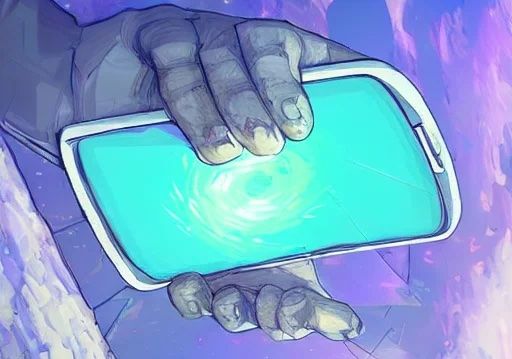The Mystery of Why Some Screens Hurt Your Eyes and Others Don’t

If you've ever used a screen and felt strange symptoms with your vision getting tired, blurry, dry, or even painful, you're not alone, and the reason why it is happening is still a mystery.
I have been closely staring at screens for as long as I can remember. Aside from the occasional slight eye fatigue after spending a dozen hours fixated on a monitor, I never had any concern with displays. My first bizarre experience arose with the iPhone 5, which triggered eye pain and dryness after less than thirty minutes of usage. The condition worsened to the point where I could no longer use the phone without feeling immense discomfort. It was frustrating, and there was no epiphany after a visit to the ophthalmologist. The outcome was, "It happens with phone usage; just reduce your screen time and use these drops daily to improve the dryness." None of those recommendations helped. But when I moved back to the older model, the discomfort disappeared. The two following editions, the iPhone 6 and iPhone X, didn't cause any trouble. Thus, when the iPhone 12 was released, I blindly upgraded, mostly to get a better camera. But, to my astonishment, the new screen had a terrible effect. After a couple of hours, my vision became blurry with a burning sensation. It was even worse than what I had experienced years back. Subsequently, I returned it and came back to the previous model.
So why did this happen? And why did it only occur with some models?
Following that misadventure and a recent comparable effect with the iPhone 14, I decided it was time to go down the rabbit hole on Reddit to try to make sense of the situation. The great news is there were display settings changes that could solve it, and that I was not the only one with such an experience. The not-so-great news is none of the suggested settings brought any improvement for me, and it seemed that the group of people with screen sensitivities was relatively small.
Historically, blue light got the most warnings about possible adverse effects on eyesight. But, in this case, the prime suspects were OLED displays. Contrary to LCD screens, OLED panels use PWM (Pulse-Width Modulation) to create lower brightness, which makes a fast flickering by turning the LEDs on and off. It is like a strobe effect that triggers symptoms in some more sensitive people. The lower the flickering frequency, the more likely the eyes will be impacted. For a PWM deep dive, you can read this comprehensive explanation.
Nonetheless, the narrative that LCDs are good, and OLEDs are evil didn't match my experience. For example, the iPhone 5 had an LCD screen and did impact my eyes; the iPhone X had an OLED display but did not cause any adverse effects.
While digging further, there seemed to be more possible variables.
The peak intensity of the brightness
In addition to the speed at which the LEDs are switched on and off, their peak brightness level could also make a difference. In other words, both the amplitude and the frequency may matter.
Temporal dithering
It is the technique used by graphics cards when they can create more colors than the screen can handle. The cards simulate the missing colors by rapidly switching between two colors to blend them. Unfortunately, that color flickering may cause complications for some people.
From the discussions in the forums, it is clear that there is variability around the models that cause harm to specific individuals. Not everyone is sensitive to the same kind of issues.
What’s next?
Given the short-term impact on usability and, most notably, the possible long-term eye health hazards, it is critical to solve this decade-old mystery. We have multiple alternative explanations, but there's not enough evidence to support a definitive answer that would elucidate all cases. More data is needed about the experiences of users from all over the world.
As we keep staring at screens day in and day out, the problem is bound to intensify unless we find a way to fix it. Hence, I decided to launch a small survey to gather an inventory of devices that cause eye strain and related symptoms. A pattern from correlated specifications may be revealed with a large enough number of responses.
If you ever had eye troubles from using a phone, tablet, or computer, share your experience in this short survey.
You may be wondering how that data would be helpful. The information alone will not bring the solution directly, but it is a necessary step towards a potential resolution path. The story of Martine Rothblatt, who founded what is known today as Sirius XM, is an inspiring example. Her daughter was diagnosed with Pulmonary Arterial Hypertension in the nineties. At that time, there was no cure, and it was a lethal disease. Consequently, Martine embarked on her own research journey and found a molecule, abandoned by GlaxoSmithKline, that could possibly help. The molecule ultimately led to the development of an effective drug to prevent the condition from becoming fatal. As a result, her daughter is now in her thirties. She lives a happy and healthy life working for United Therapeutics, the company founded by her mother that developed the treatment helping tens of thousands of people.
Similarly, we must take the first step and do our own research, which may lead to unexpected insights. Those findings could eventually lay the foundation for a permanent solution.
Vision is one of life's most valuable blessings, and it is our responsibility to protect our eyes' health. So, while navigating the journey to discover the answer to this mystery, it may be wise to reduce our overall screen time and avoid the devices causing severe symptoms.
